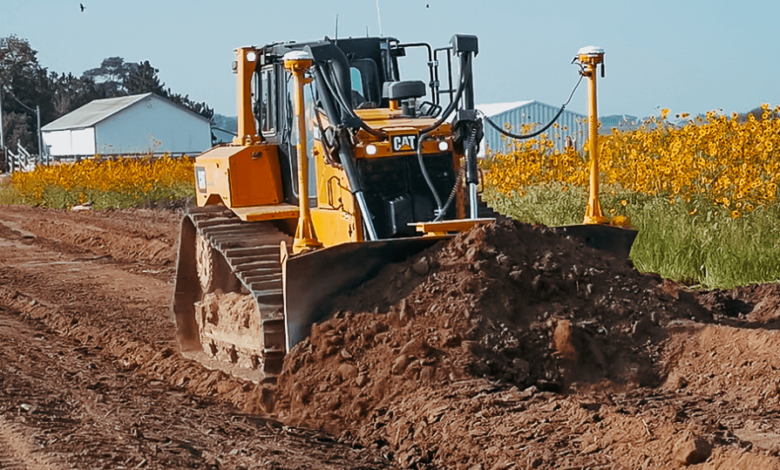What Is Geo Grid: A Guide to Soil Stabilization Technology

In modern civil engineering and construction, ground improvement is often a critical step before any infrastructure is built. In many cases, natural soil alone cannot bear heavy loads or maintain structural integrity over time. This is where geo grid systems come into play. If you’re asking what is geo grid, this article explores the material, its functionality, and how it contributes to reliable and efficient construction practices.
Understanding the Concept
Geo grid, also written as “geogrid,” is a geosynthetic material made from polymers that form a grid-like mesh. It is engineered to reinforce soil and other construction materials, allowing for increased load-bearing capacity and stability. The openings, or apertures, within a geo grid allow for soil or aggregate to pass through, creating a mechanically interlocked structure that resists shifting and deformation.
While the term might sound complex, the concept is straightforward: a geo grid is like a net that strengthens the earth, especially where poor soil conditions exist.
Why Geo Grids Are Used
Soils, especially soft clays or loose sands, have low tensile strength. That means they can compress or slide when subjected to heavy pressure or moisture. The primary reason for using geo grids is to improve soil performance by providing a tensile element that holds soil in place.
By integrating geo grid layers into the soil, engineers can create a reinforced composite material that handles vertical loads, resists erosion, and minimizes deformation over time.
See also: Choosing the Best Pool Companies in Dubai: A Complete Guide
Main Categories of Geo Grids
To fully understand what is geo grid it helps to break down the different types available and their respective uses:
Uniaxial Geo Grids
These have tensile strength in one direction, typically used in wall and slope reinforcement. They support loads exerted from a single orientation.
Biaxial Geo Grids
Designed with equal strength in both longitudinal and transverse directions, biaxial geo grids are used in road foundations and base reinforcement.
Triaxial Geo Grids
A more advanced form, triaxial geo grids provide strength in multiple directions. They are especially effective in distributing loads in dynamic environments like highways and airfields.
Manufacturing and Materials
Geo grids are made from high-performance polymers like:
- Polypropylene (PP)
- High-Density Polyethylene (HDPE)
- Polyester (PET)
These materials are selected for their durability, resistance to environmental degradation, and mechanical strength. The manufacturing process involves extrusion (stretching melted plastic), knitting, or welding of polymer strips to form structured grids.
Each process results in different grid configurations tailored for specific applications.
Applications in Construction
When asking what is geo grid, it’s essential to look at where and how it’s used. Geo grids are applied in a variety of construction and civil engineering projects:
Road Construction
Placed under roads and highways, geo grids enhance base and sub-base layers, minimizing the required thickness of expensive fill materials.
Slope and Embankment Stabilization
On hillsides or riverbanks, geo grids prevent erosion and improve slope angles by reinforcing soil layers.
Retaining Walls
In gravity walls and mechanically stabilized earth (MSE) walls, geo grids act as tensile reinforcements that tie back into the soil mass behind the wall.
Airport Pavements
Due to high dynamic loads, runways and taxiways benefit greatly from geo grid installation to prevent cracking and reduce long-term maintenance.
Load Platforms
In soft ground areas like marshlands or reclaimed land, geo grids are used to create stable platforms for equipment, cranes, and building foundations.
Benefits of Using Geo Grids
One reason why engineers and contractors are increasingly turning to geo grids is due to their numerous benefits:
1. Cost Savings
Geo grids reduce the need for expensive earthwork, such as soil replacement or thick gravel layers. This leads to lower material and transport costs.
2. Improved Performance
Structures built with geo grids are stronger and last longer. Reduced settlement and enhanced load distribution contribute to improved safety.
3. Environmental Friendliness
By enabling the use of on-site soil and reducing the volume of imported material, geo grids contribute to eco-friendly construction practices.
4. Faster Installation
With easy handling and minimal equipment required, geo grid systems can be installed quickly and efficiently.
Design and Engineering Considerations
When planning a project that involves geo grids, several factors must be considered to ensure optimal performance:
- Soil type and strength
- Load requirements
- Drainage conditions
- Depth and spacing of geo grid layers
- Environmental exposure (UV, chemical)
Designers often use geotechnical software and field tests to model how the geo grid will behave under specific conditions
Challenges and Limitations
Despite the many advantages, geo grids are not without limitations. Misapplication or poor installation can reduce effectiveness. Common issues include:
- Improper orientation of uniaxial grids
- Inadequate overlap between grid sections
- Poor soil compaction
- Exposure to aggressive chemicals not compatible with certain polymers
For this reason, site-specific design and trained installation crews are essential.
Future Trends in Geo Grid Technology
Geo grid innovation continues to evolve. Advances in materials, such as composite geo grids with additional filtration or drainage properties, are on the rise. Smart geo grids embedded with sensors are also being explored, allowing real-time monitoring of soil movement and structural health.
Furthermore, the integration of geo grid solutions with other geosynthetics—like geotextiles or geomembranes—is creating multi-functional products for complex construction environments.
Conclusion
So, what is geo grid in the context of modern engineering? It is a practical, powerful, and eco-efficient reinforcement solution that transforms weak soil into a stable foundation. Whether for roads, walls, or slopes, geo grids are helping engineers overcome ground challenges while reducing cost and improving structural lifespan.
As construction continues to grow in both complexity and environmental sensitivity, the role of geo grids will become even more significant. With the right design, materials, and installation, they offer a smart path toward safer and more resilient infrastructure.




